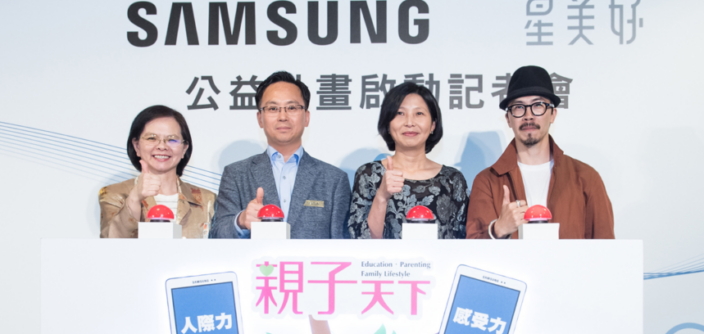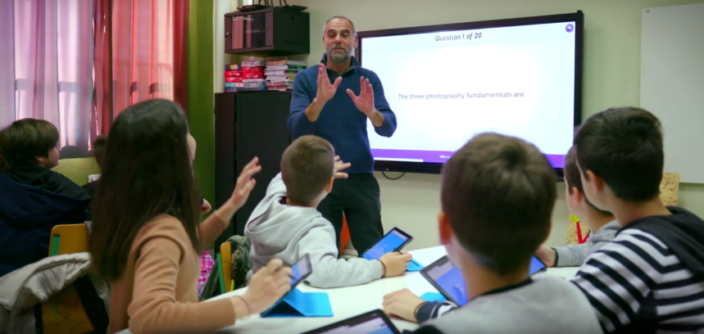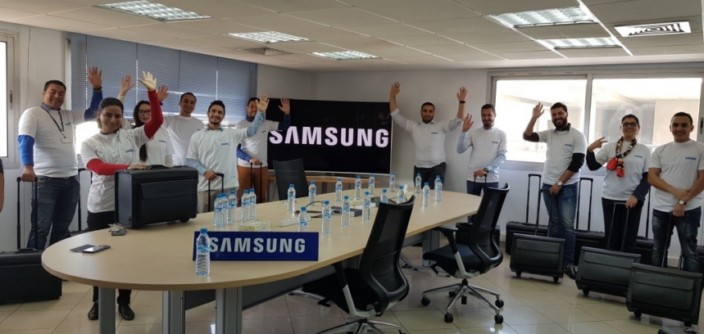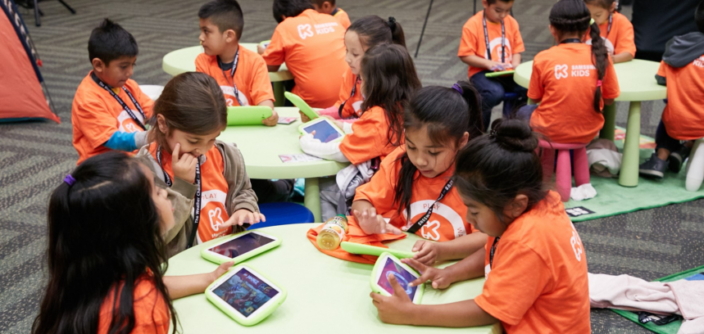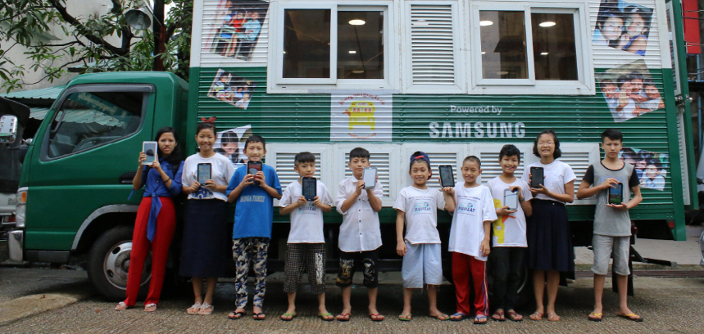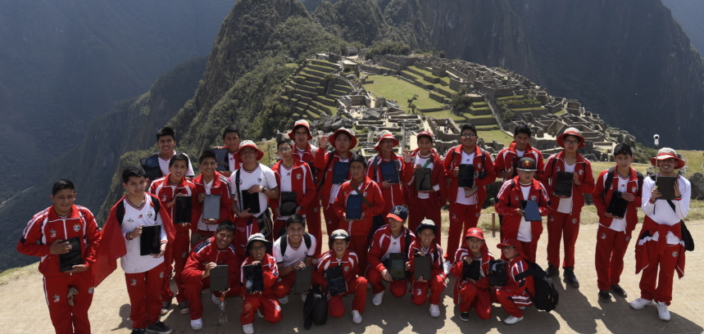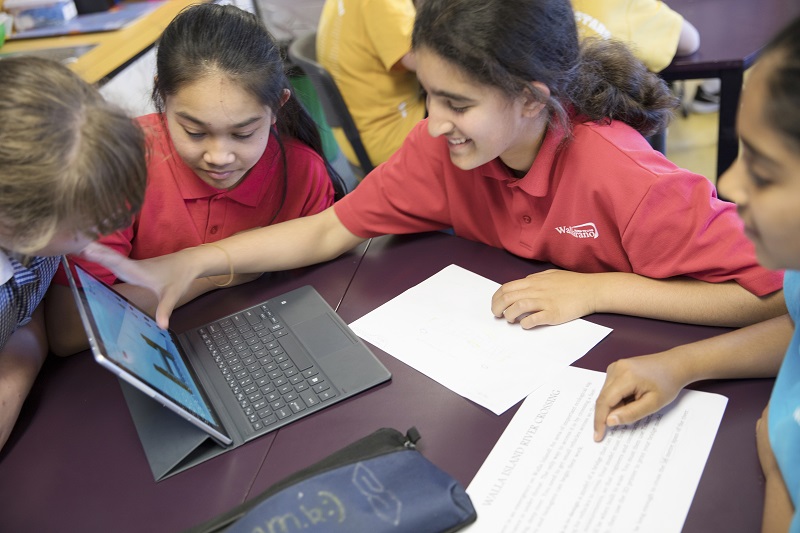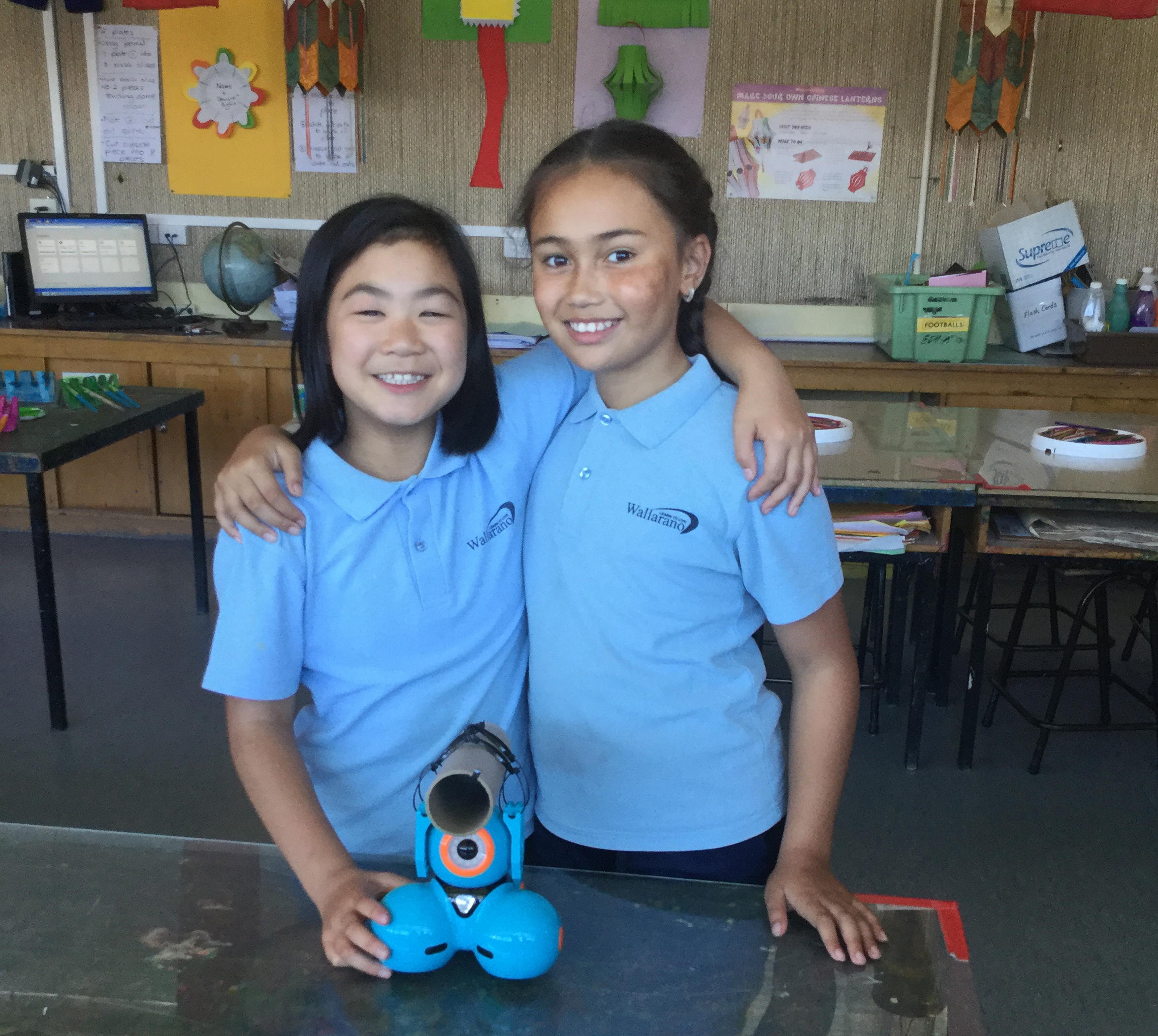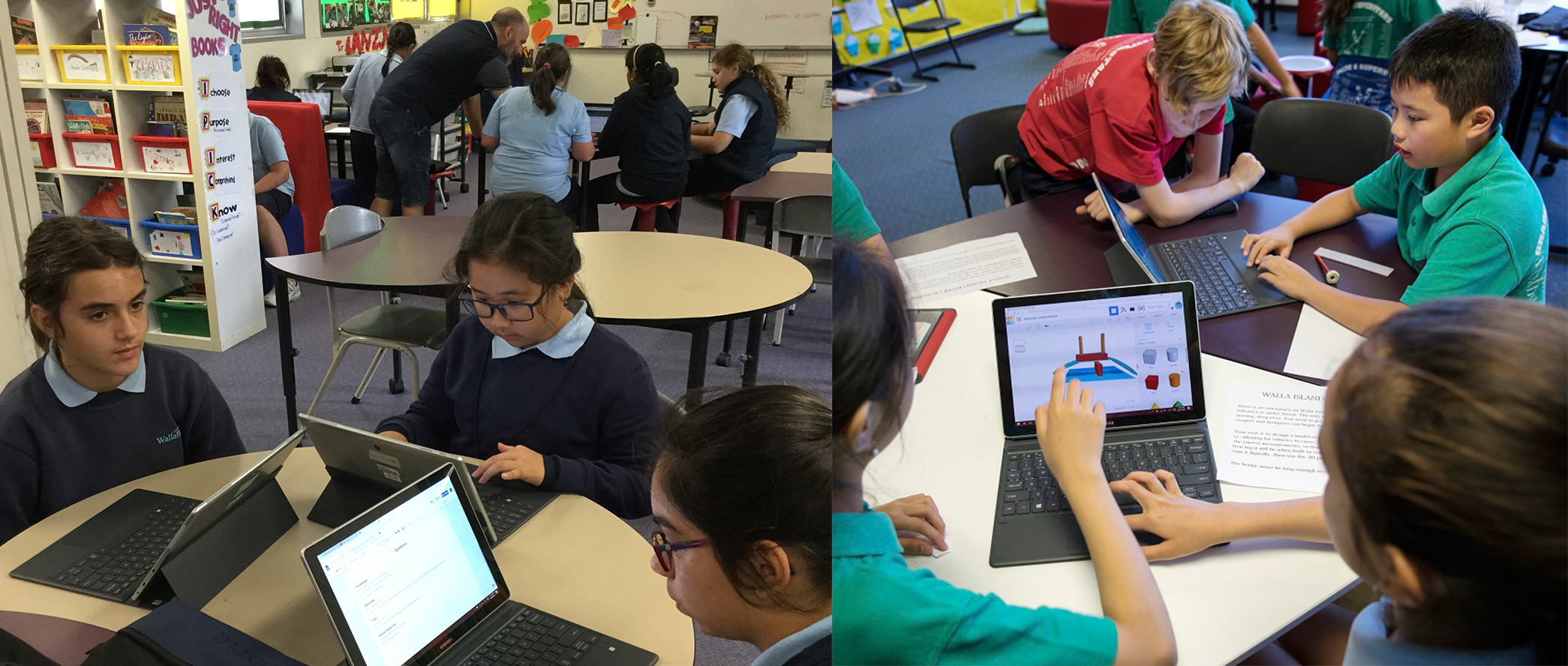Principal of Multicultural School Talks about STEM Education
on August 20, 2018
Q&A with Principal Gail Doney of Wallarano Primary School, Victoria, Australia sheds light on equality issues in access to STEM (Science, Technology, Engineering and Math) education
and how help from the private sector can help.
Educational inequality is an issue many communities struggle with. While the symptoms are usually the result of a number of factors, students with less access to education are less likely to develop skills that will be critical in the future workforce.
To help address this issue, Samsung Electronics Australia and Social Ventures Australia (SVA) have expanded the Bright Spots Schools Connection initiative to include the STEM Learning Hub – an initiative that brings STEM expertise and support to schools in communities across Australia where resources are most needed.

Students of the Wallarano Primary School in Victoria, Australia, engage with digital devices in their classroom
Wallarano Primary School, a large multicultural school situated in Victoria, is one of 48 schools that are part of SVA’s Bright Spots Schools Connection. Wallarano is unique in that it services a culturally rich community of 689 students from over 40 different nations. Among these students, 69% are from a non-English speaking background. Over the last year, teachers and students from Wallarano have been exploring Samsung technology in the classroom.
Samsung Newsroom asked Wallarano’s Principal Gail Doney how she has personally seen the teachers and students benefit as a result of being part of the STEM Learning Hub:
Q. Why do you think programs like the STEM Learning Hub and partnerships like the Samsung/SVA collaboration are so important to the advancement of education?
Education and the private sector need to work together in this time of rapid change. Schools must stay in tune with the future skills and capabilities that young people will need to be successful in the future. Working with Samsung has provided many advantages for our school, particularly by exposing our students to the latest classroom technologies. Our involvement in the STEM Learning Hub has also connected us with like-minded professionals to share different views and perspectives on how to best implement STEM.
Q. Do you think the learning outcomes and experiences of your students have improved as a result of being involved in the STEM Learning Hub?
Most certainly – in fact, our 2017 NAPLAN results showed that 39% students had made a relative gain in Numeracy and over a quarter of our students in Grade 3 (29.4%) and Grade 5 (27.2%) were in the top two bands.
When assessed on the Victorian Curriculum in June this year Wallarano students showed improvements across all areas of learning:
- Digital Technologies 96% at or above the expected level with 32% of student 1 year ahead of the expected level (compared to 94% at or above in 2017 with only 9.8% of students 1 year ahead of the expected level)
- Numeracy 85% at or above expected level (compared to 66.5% in 2017)
- Measurement and Geometry 88% at or above the expected level (compared to 75.3%% in 2017)
- Statistics and probability 92% at or above the expected level (compared to 66% in 2017)
- Science Understanding 93% at or above expected level (compared to 88.5% in 2017)
- Science Inquiry 92% at or above expected level (compared to 88.5% in 2017)
Last year, two Grade 3 girls won 1st place in Australia in the Wonder League Robotics Competition for their age group which was a highlight for all of us at Wallarano.

Two Grade 3 girls won 1st place in Australia in the 2016/17 Wonder League Robotics Competition
What has been most rewarding for us is that the children themselves are telling us that they are more engaged. 88% of students indicated in a school survey that the Digital Sandpit was their favorite school activity.
Q. Prior to being involved in the STEM Learning Hub, what challenges did you face as a teacher?
As teachers, we faced big questions like – What is STEM? What technologies do we need? What is the best way to introduce and implement STEM to ensure a high-quality program at all levels in the primary school setting.
Being involved in the STEM Learning Hub has really helped us to answer these questions by understanding how specific technologies can enrich the learning experience not only for students, but also for teachers.
Q. Why do you think technology is such an important part of learning development and educational experiences?
Technology is embedded in all areas of society and children must know how they work and why, not just how to use them. Students need to have knowledge, skills and capabilities in STEM and design thinking to enable them to enter professions relevant to the modern world – so it is imperative we are setting them up for future success.

Wallarano students in their Digital Sandpit, where staff and students can play, experiment and give each other small challenges to tackle with digital technologies
Q. How have you been incorporating Samsung technology and other technologies in the classroom?
We extensively use the Galaxy Books, the 360 cameras and Samsung phones for Virtual Reality experiences in the classroom. We run a weekly session called the Digital Sandpit where staff and students can play, experiment and give each other small challenges with Samsung technology and equipment such as 3D printers, Laser Cutters and Robotics. Meanwhile, we are also beginning to use the 360 cameras to give teachers visual references of their practice which we then use to give constructive feedback.


